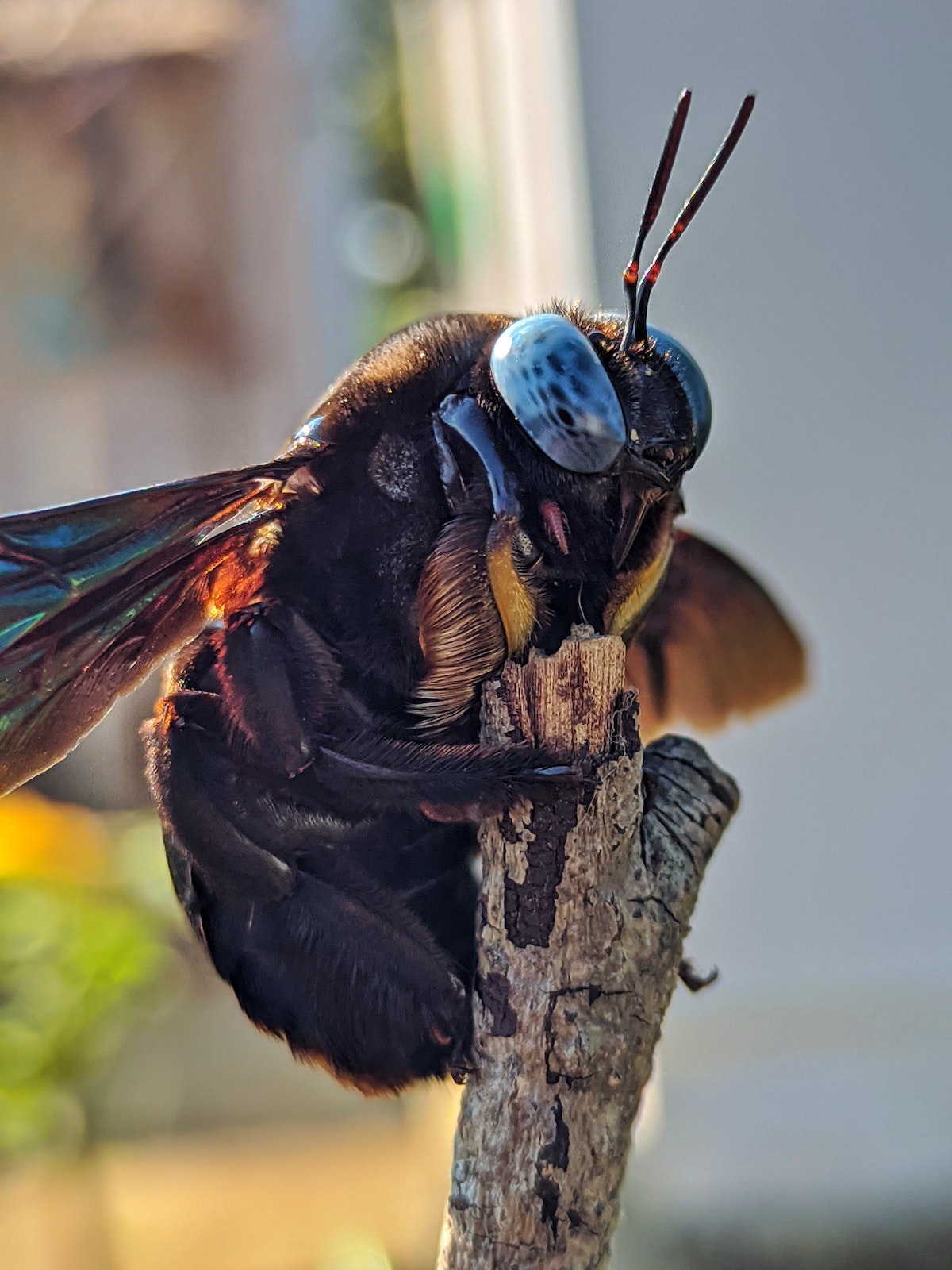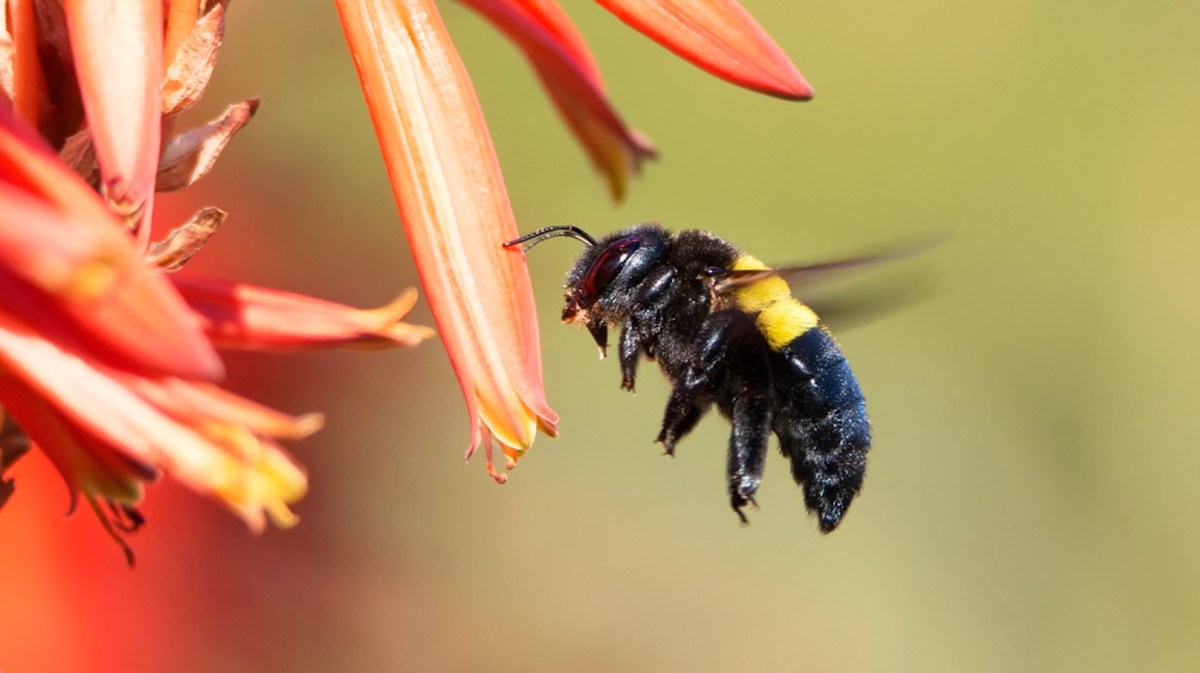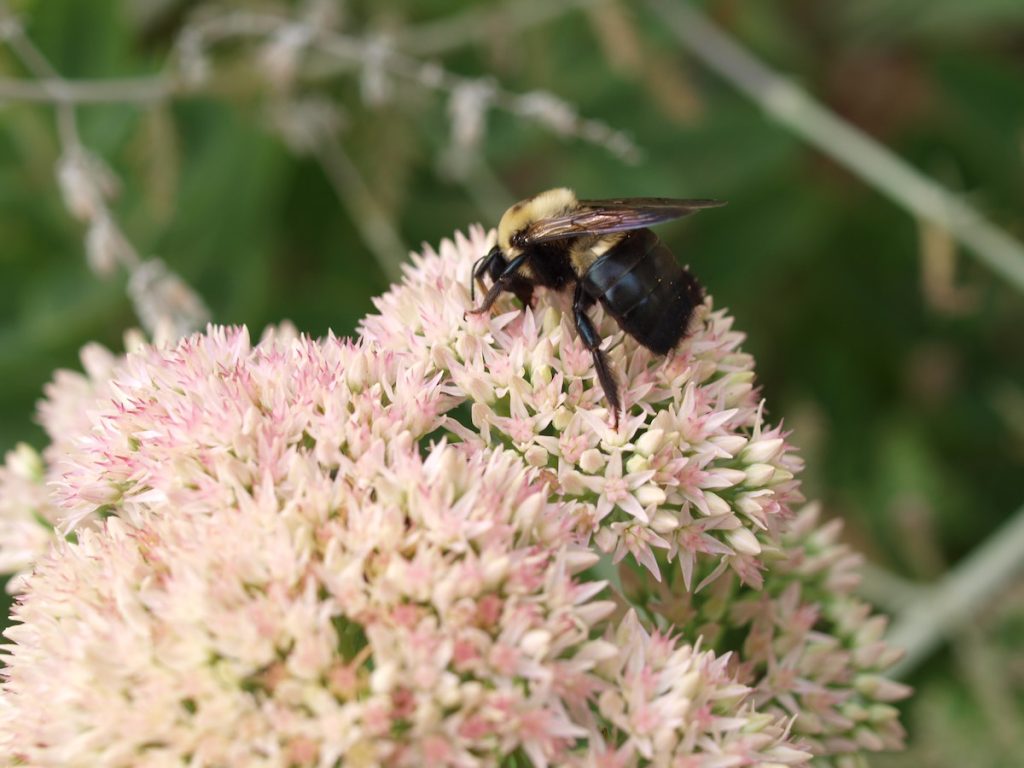Carpenter bees are the largest of the bee family found in North America. They can be a serious nuisance when they start to infest your home, especially during the summer. So homeowners look for various ways to get rid carpenter bees and make sure that they do not come back.
Carpenter bees drilling holes in wood isn’t an actual issue if they’re doing it in the forest. But if they’re drilling holes in the wood you use to build your house, your porch or that new porch swing you just installed, then it’s a huge and expensive problem.
How carpenter bees “work”
During spring or summer, carpenter bees inspect all available locations for potential homes. Once a spot is selected, they start drilling the wood with their mandibles. A perfect circular hole is formed as an entrance to a tunnel that will lead to several branching tunnels constructed by the worker bees.
Carpenter bees have a female dominant society. The males don’t sting as they don’t have a stinger but the females can sting when rubbed the wrong way. Among the eggs laid, about 98 percent are female.
Stinger or no stinger, the problem with carpenter bees is the damage they can do to your home.
Raw or untreated wood are the perfect target. This means outdoor furnishing like tables, chairs, or wood you use on your porch, windows, or door frames.
So how do you get rid of carpenter bees and how do you prevent them from building a home in your home?
How to prevent carpenter bee infestation
-
Seal any exposed wood around your house
Ask any pest control expert and they will tell you that prevention is always better than cure, which is why it is important to learn how to protect wood from carpenter bees instead of waiting for the insects to cause a problem.
For starters, never have any untreated wood in your property as they will attract carpenter bees. If you do have them, then makes sure to paint or seal any exposed wood around your home.
-
Keep plants and bushes trimmed well
Another way to prevent Carpenter Bees from infesting your home is to keep plants and bushes trimmed well so carpenter bees have fewer places to hide, which means they will look elsewhere for a place to build their nests.
You can prevent carpenter bees from making a home in your garden by understanding the type of plants and flowers they prefer. Carpenter bees like plants and trees with small, soft leaves and lots of pollen, which means they will feel right at home in your garden if you have these types of plants growing there. If you do not want these insects near your garden, try removing as many soft-leafed plants as possible.
Similarly, you may want to keep plants that repel carpenter bees. Though flowers do attract bees, there are some plants that repel them because of the scent they emit. Some of these plants are citronella grass, thyme, mint, basil, and cucumber – plants that are easy to grow even for someone really bad at gardening.
How to get rid of carpenter bees

-
Use natural plant extracts
You can make homemade sprays by mixing essential plant oils with water and spraying them onto affected areas where carpenter bees usually nestle. However, this method only works on insects when they are in their early stages of development.
-
Use almond oil
Never underestimate the power of scent. Bees have a nose that’s 100 times more powerful than a human’s, they use their sense of smell to find food as well as shelter. Bees likewise find many scents unappealing.
So what smell do carpenter bees hate? Carpenter bees hate the scent of almond oil and it will keep them away from a wood if you spray it with almond oil solution.
You can make homemade sprays by mixing almond oil with water and spraying them onto affected areas where carpenter bees are or by straight up rubbing almond oil into the hole they drilled.
-
Use a pressure washer
People with heavy infestation have used a pressure washer to get rid of carpenter bees by spraying them directly with high-pressure water from underneath their nesting site. You can also try this method on your siding, where you usually see piles of sawdust near areas with wood. This is how people around the community control and get rid of carpenter bees.
-
Use a foaming liquid insecticide
You can use an aerosol foam to spray these areas which contain active ingredients that will help kill off developing larvae and stop any other adult carpenter bees from entering or exiting the area.
This DIY method is one of the most effective ways people control and get rid of carpenter bees.
-
Use a liquid insecticide
A liquid insecticide is made from chemicals that are mixed with water or oil. You can spray them directly on your siding, underneath areas where wood is stored which includes those found in outdoor buildings, sheds, barns and gazebos.
But keep in mind that this method requires you to go through the trouble of mixing chemicals with water or oil before the application process – the proper safety gear must be worn as well – along with proper protective measures, such as covering surrounding plants and shrubbery to avoid damage from overspray.
This kind of DIY method also works best when applied during daytime when insects are most active. If you are unsure of the process, it’s best to call for professional help.
-
Use boric acid
You can dissolve boric acid in water and spray it on the wood to kill the bees. Make sure to use a spray bottle for this! You can buy boric acid or make your own by mixing baking soda or Borax with sugar and water.
-
Use vinegar
Bees can not handle vinegar and it’s a good thing too because it’s very cheap and readily available. So, how to get rid of carpenter bees with vinegar? It’s very simple. Simply combine vinegar and water and spray it directly into the hole housing the bees.
Note that this will instantly kill carpenter bee larvae so this won’t be a solution if you’re looking for a more bee-friendly way to drive the bees away.
How to get rid of carpenter bees naturally in 4 easy steps

The trick with carpenter bees is that you need the nests gone before the larvae mature (the ones that haven’t matured are harmless), or else they’ll just keep coming back. Here’s how to get rid of carpenter bee naturally:
1. Find out where the nests are
The entrances to carpenter bee nests are usually very small, half an inch at most, and some have a visible pile of sawdust just outside. To find out where they are, use a drill to make holes in all areas of your siding or deck that you think might be infested. If you have a nest, you’ll see a bunch of sawdust on the ground.
2. Pour boiling water into them
Now that you know where the nests are, it’s time to get rid of them! Using a big pot and a stir rod (or anything long and sturdy) pour boiling water on top of the bee nests. This will kill the bees and their larvae and discourage them from coming back since they can’t return to their destroyed homes.
After you’re done doing this, it’s a good idea to cover the holes with mesh or caulk so they don’t come back.
3. Keep carpenter bees away by putting up fencing
If you have a fence around your house, put wire mesh in between the wooden beams of your siding. This will prevent carpenter bees from using the fencing as a home when they are looking for places to nest. You can also do this with decks or patios that are attached to your home.
4. Plant flowers that deter carpenter bees
Use their keen sense of smell to your advantage and drive them away with scent they hate. Plant flowers that they typically stay away from. Not only will the smell of these flowers keep them away, but they’ll attract other insects that are natural predators to carpenter bees.
Plants that repel carpenter bees include lavender, marigolds, hyssop, milkweed, zinnias, and primrose.
Does Your Property have Carpenter Bees?
The most obvious signs that you have a carpenter bee infestation are holes. If you notice holes that are drilled into the wood around your home that are 2-inch in diameter, then you may have a bee infestation. If you see piles of sawdust near the area, then that is another sign that you have carpenter bees nesting nearby.
Carpenter Bees vs. Bumble Bee
Learning how to identify carpenter bees is important, too. They are often mistaken for bumble bees and vice versa because of they can be slightly similar in appearance.
Carpenter bees can easily be identified by their shiny, black exterior and their physical difference in size. Females can grow up to ½ inch while males do not exceed ¼ of an inch. Carpenter bees also have a shiny abdomen with pale yellow markings on the thorax and the abdomen.
Bumblebees are similar in that they both have a fuzzy body but bumblebees are mostly covered with hair while carpenter bees only have a fine layer of hair which makes them look darker in color.
Another way you can tell apart these two types of bees is through their sound. Bumblebees make sounds from high frequencies to low frequencies where as carpenter bees make buzzing sounds from low frequency to very high-pitched sound
When to call for professional help
Repelling or getting rid of carpenter bees is not so hard if you know what to do and where to begin. However it could be tricky and you could get stung by a female bee. If you’re not too sure about what to do or if you have a severe carpenter bee infestation, then it may be time to ask for professional help.
